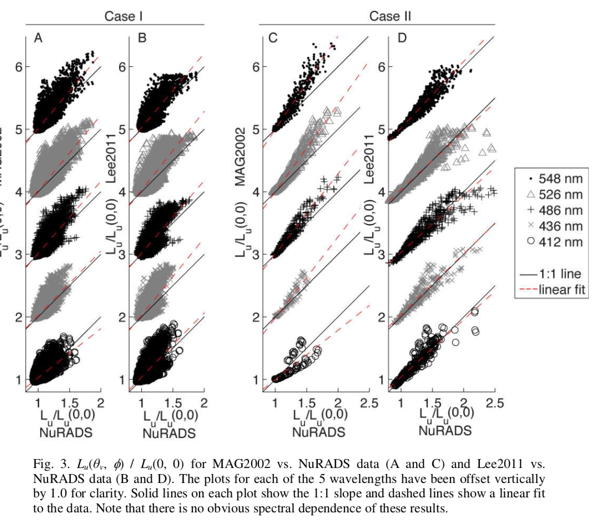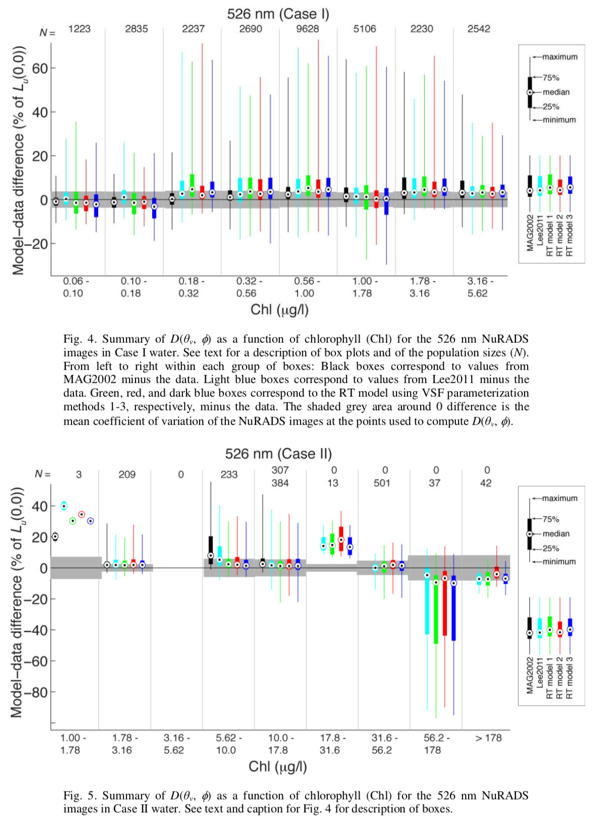Gleason, A. C. R., K. J. Voss, H. R. Gordon, M. Twardowski, J. Sullivan, C. Trees, A. Weidemann, J.-F. Berthon, D. Clark, Z.-P. Lee, 2012: Detailed validation of the bidirectional effect in various Case I and Case II waters, Optics Express: 20 (7), 7630-7645, doi: 10.1364/OE.20.007630.
Key points:
- In Case I conditions, MAG2002 produced the closest agreement with field measurements of the models considered in this study.
- MAG2002 used a variable particulate phase function, suggesting that in Case I water the shape of the particulate phase function is important for modeling BRDF of the ocean. different particulate phase functions did not always produce similar output suggests that in Case I water the shape of the particulate phase function is important for modeling BRDF of the ocean.
- In Case II conditions, several models produced similar results; of the ones considered, Lee2011 is probably the most convenient to implement, since published tables are available already.
- The results of this study suggest that operational correction of remotely sensed data for bidirectional reflectance effects could be performed with two models, depending on the water type. Lee2011 [10] was superior to MAG2002 [9] in Case II water at small azimuth angles and for chlorophyll concentrations greater than the 10 μg l−1 limit of MAG2002. MAG2002 [9], however, remained superior to Lee2011 [10] for Case I water.
Abstract: Simulated bidirectional reflectance distribution functions (BRDF) were compared with measurements made just beneath the water’s surface. In Case I water, the set of simulations that varied the particle scattering phase function depending on chlorophyll concentration agreed more closely with the data than other models. In Case II water, however, the simulations using fixed phase functions agreed well with the data and were nearly indistinguishable from each other, on average. The results suggest that BRDF corrections in Case II water are feasible using single, average, particle scattering phase functions, but that the existing approach using variable particle scattering phase functions is still warranted in Case I water.
 ART GLEASON | Ocean Optics
ART GLEASON | Ocean Optics
